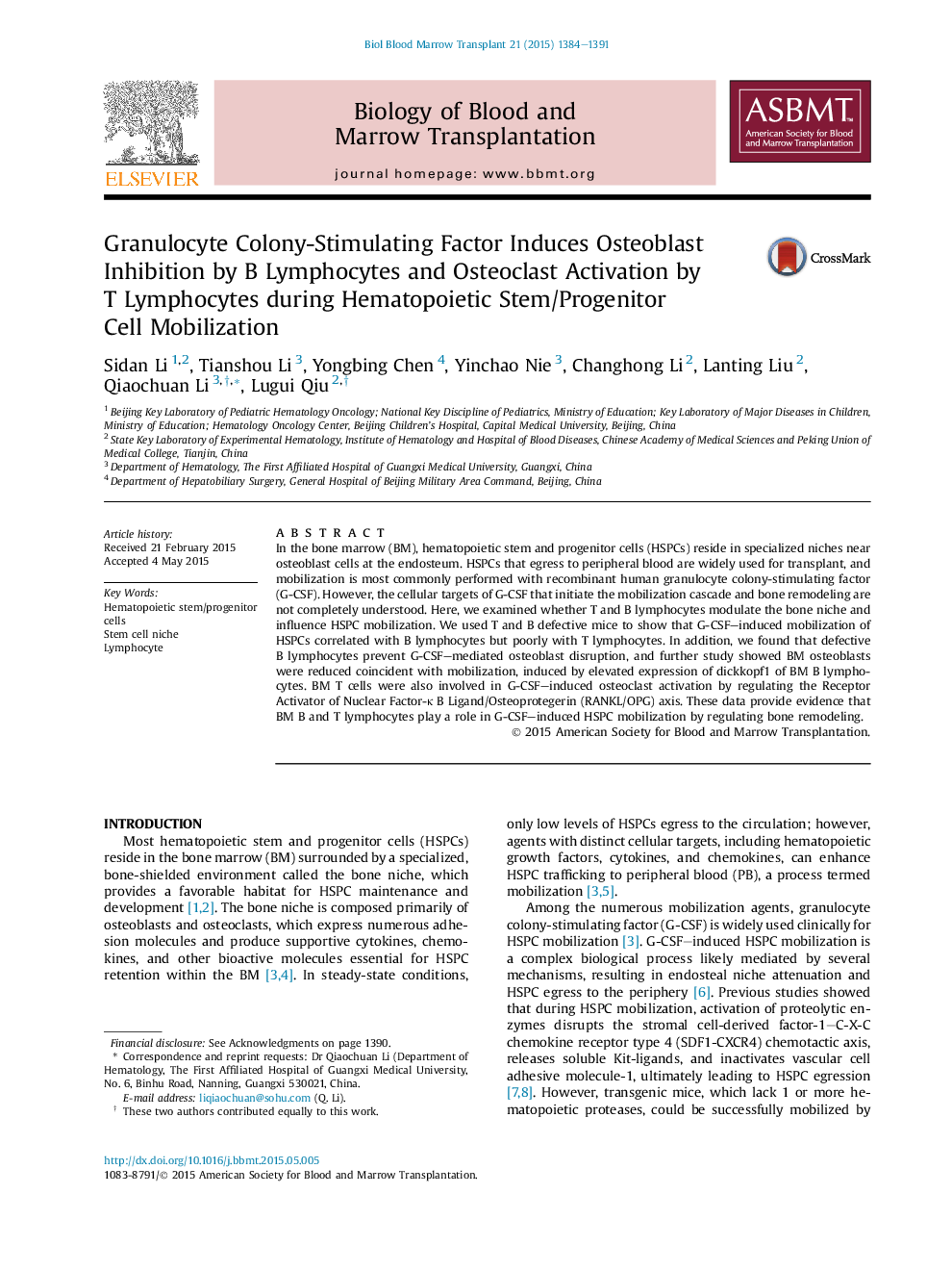| Article ID | Journal | Published Year | Pages | File Type |
|---|---|---|---|---|
| 8431349 | Biology of Blood and Marrow Transplantation | 2015 | 8 Pages |
Abstract
In the bone marrow (BM), hematopoietic stem and progenitor cells (HSPCs) reside in specialized niches near osteoblast cells at the endosteum. HSPCs that egress to peripheral blood are widely used for transplant, and mobilization is most commonly performed with recombinant human granulocyte colony-stimulating factor (G-CSF). However, the cellular targets of G-CSF that initiate the mobilization cascade and bone remodeling are not completely understood. Here, we examined whether T and B lymphocytes modulate the bone niche and influence HSPC mobilization. We used T and B defective mice to show that G-CSF-induced mobilization of HSPCs correlated with B lymphocytes but poorly with T lymphocytes. In addition, we found that defective B lymphocytes prevent G-CSF-mediated osteoblast disruption, and further study showed BM osteoblasts were reduced coincident with mobilization, induced by elevated expression of dickkopf1 of BM B lymphocytes. BM T cells were also involved in G-CSF-induced osteoclast activation by regulating the Receptor Activator of Nuclear Factor-κ B Ligand/Osteoprotegerin (RANKL/OPG) axis. These data provide evidence that BM B and T lymphocytes play a role in G-CSF-induced HSPC mobilization by regulating bone remodeling.
Related Topics
Life Sciences
Biochemistry, Genetics and Molecular Biology
Cancer Research
Authors
Sidan Li, Tianshou Li, Yongbing Chen, Yinchao Nie, Changhong Li, Lanting Liu, Qiaochuan Li, Lugui Qiu,
